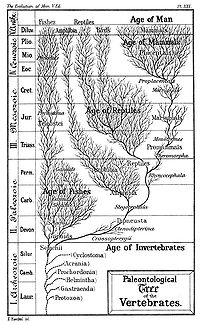
Photo from wikipedia
Objective The purpose of this study was to examine the timing of introduction of complementary (solid) foods among infants in South Western Sydney, Australia, and describe the maternal and infant… Click to show full abstract
Objective The purpose of this study was to examine the timing of introduction of complementary (solid) foods among infants in South Western Sydney, Australia, and describe the maternal and infant characteristics associated with very early introduction of solids. Methods Mother-infant dyads ( n = 1035) were recruited into the “Healthy Smiles Healthy Kids” study by Child and Family Health Nurses at the first post-natal home visit. Data collected via telephone interviews at 8, 17, 34 and 52 weeks postpartum included timing of introduction of solids and a variety of maternal and infant characteristics ( n = 934). Multiple logistic regression was used to identify factors independently associated with the risk of introducing solids very early, which for the purpose of this study was defined as being before 17 weeks. Results The median age of introduction of solids was 22 weeks. In total, 13.6% ( n = 127) of infants had received solids before 17 weeks and 76.9% ( n = 719) before 26 weeks of age. The practice of introducing solids early decreased with older age of the mother. Compared to women < 25 years of age, those who were 35 years or older were 72% less likely to introduce solids very early (OR = 0.28, CI 95 0.14–0.58). Single mothers had more than twice the odds of introducing solids before the age of 17 weeks compared to married women (OR = 2.35, CI 95 1.33–4.16). Women who had returned to work between 6 to 12 months postpartum were 46% less likely to introduce solids very early compared with those who were not working at the child’s first birthday (OR = 0.54, CI 95 0.30–0.97). Women born in Vietnam and Indian sub-continent had lower odds of introducing solids very early compared to Australian born women (OR = 0.42, CI 95 0.21–0.84 and OR = 0.30, CI 95 0.12–0.79, respectively). Infants who were exclusively formula-fed at 4 weeks postpartum had more than twice the odds of receiving solids very early (OR = 2.34, CI 95 1.49–3.66). Conclusions Women who are younger, single mothers, those not working by the time of child’s first birthday, those born in Australia, and those who exclusively formula-feed their babies at 4 weeks postpartum should be targeted for health promotion programs that aim to delay the introduction of solids in infants to the recommended time.
Journal Title: Nutrition Journal
Year Published: 2020
Link to full text (if available)
Share on Social Media: Sign Up to like & get
recommendations!